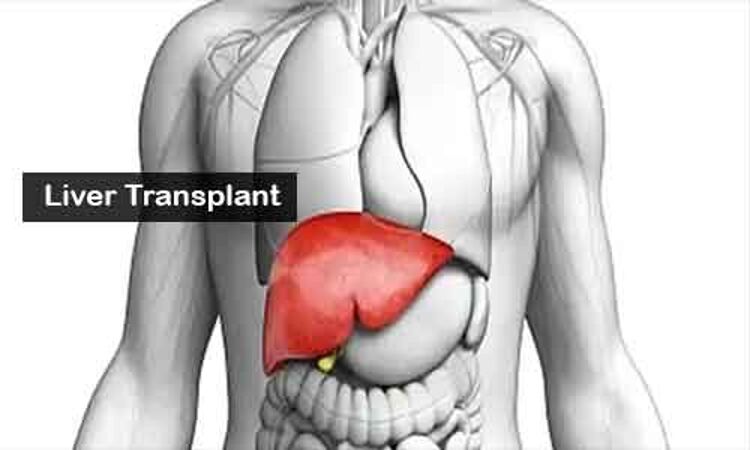- Home
- Medical news & Guidelines
- Anesthesiology
- Cardiology and CTVS
- Critical Care
- Dentistry
- Dermatology
- Diabetes and Endocrinology
- ENT
- Gastroenterology
- Medicine
- Nephrology
- Neurology
- Obstretics-Gynaecology
- Oncology
- Ophthalmology
- Orthopaedics
- Pediatrics-Neonatology
- Psychiatry
- Pulmonology
- Radiology
- Surgery
- Urology
- Laboratory Medicine
- Diet
- Nursing
- Paramedical
- Physiotherapy
- Health news
- Fact Check
- Bone Health Fact Check
- Brain Health Fact Check
- Cancer Related Fact Check
- Child Care Fact Check
- Dental and oral health fact check
- Diabetes and metabolic health fact check
- Diet and Nutrition Fact Check
- Eye and ENT Care Fact Check
- Fitness fact check
- Gut health fact check
- Heart health fact check
- Kidney health fact check
- Medical education fact check
- Men's health fact check
- Respiratory fact check
- Skin and hair care fact check
- Vaccine and Immunization fact check
- Women's health fact check
- AYUSH
- State News
- Andaman and Nicobar Islands
- Andhra Pradesh
- Arunachal Pradesh
- Assam
- Bihar
- Chandigarh
- Chattisgarh
- Dadra and Nagar Haveli
- Daman and Diu
- Delhi
- Goa
- Gujarat
- Haryana
- Himachal Pradesh
- Jammu & Kashmir
- Jharkhand
- Karnataka
- Kerala
- Ladakh
- Lakshadweep
- Madhya Pradesh
- Maharashtra
- Manipur
- Meghalaya
- Mizoram
- Nagaland
- Odisha
- Puducherry
- Punjab
- Rajasthan
- Sikkim
- Tamil Nadu
- Telangana
- Tripura
- Uttar Pradesh
- Uttrakhand
- West Bengal
- Medical Education
- Industry
Frailty linked to higher mortality for women awaiting liver transplants

Women awaiting liver transplants in the United States are known to be about one-third more likely than men to become too ill to undergo surgery or die before receiving a liver. Now a study headed by UC San Francisco and Columbia University highlights the role that frailty plays in this gender gap.
The study followed 1,405 patients with cirrhosis, of whom 41 percent were women, awaiting liver transplantation at nine transplant centers in the United States. The men, whose ages ranged from 49 to 63, were more likely to have chronic hepatitis C and alcoholic liver disease (27 percent versus 22, and 33 percent versus 19 percent). The women, whose ages ranged from 50 to 63, were more likely to have non-alcoholic fatty liver disease and autoimmune cholestatic liver disease (23 percent versus 16 percent, and 23 percent versus 9 percent).
The researchers, led by first author Jennifer Lai, MD, MBA, a general and transplant hepatologist at the UCSF Department of Medicine, found that both genders had similar levels of liver disease severity, but fewer women had high blood pressure and coronary artery disease. Despite this, they were significantly frailer according to testing using the Liver Frailty Index (LFI), which showed weaker gender-adjusted grip, worse balance and that they were slower to stand up from a sitting position.
"This is the first time that frailty has been identified and quantified as a risk factor among women with cirrhosis who are waiting for liver transplants," said Lai. "The importance of this finding is that this gender gap can potentially be mitigated through early interventions as basic as providing adequate caloric and protein intake and engaging in regular exercise. Clinicians can advise women on diet and exercise interventions that build strength." These steps may be helpful for women undergoing other organ transplants, since frailty may play a role there too, the authors noted.
While the causes of frailty were not explored, Lai said that it is generally attributed to physical inactivity, chronic liver failure and poor diet.
Over the course of the study, the women had a 36 percent higher risk of waitlist mortality, which was defined as death or delisting for being too sick for transplantation. After adjusting for LFI scores and other variables, the researchers concluded that frailty accounted for 13 percent of the gender gap in waitlist mortality. While the study does not address the other factors that make up for the gender disparity, the authors note differences in kidney function and the higher percentage of male donors, who may be poor matches for women given their smaller stature.
The greatest significance of the study, said Lai, is at the level of the population of liver transplant patients in the United States.
"The waitlist mortality gender gap has persisted for 15 years across the entire U.S. liver transplant system and will continue to persist if it is not recognized," she said. Fortunately, "now that it has been recognized, it can be addressed."
Hina Zahid Joined Medical Dialogue in 2017 with a passion to work as a Reporter. She coordinates with various national and international journals and association and covers all the stories related to Medical guidelines, Medical Journals, rare medical surgeries as well as all the updates in the medical field. Email: editorial@medicaldialogues.in. Contact no. 011-43720751
Dr Kamal Kant Kohli-MBBS, DTCD- a chest specialist with more than 30 years of practice and a flair for writing clinical articles, Dr Kamal Kant Kohli joined Medical Dialogues as a Chief Editor of Medical News. Besides writing articles, as an editor, he proofreads and verifies all the medical content published on Medical Dialogues including those coming from journals, studies,medical conferences,guidelines etc. Email: drkohli@medicaldialogues.in. Contact no. 011-43720751


